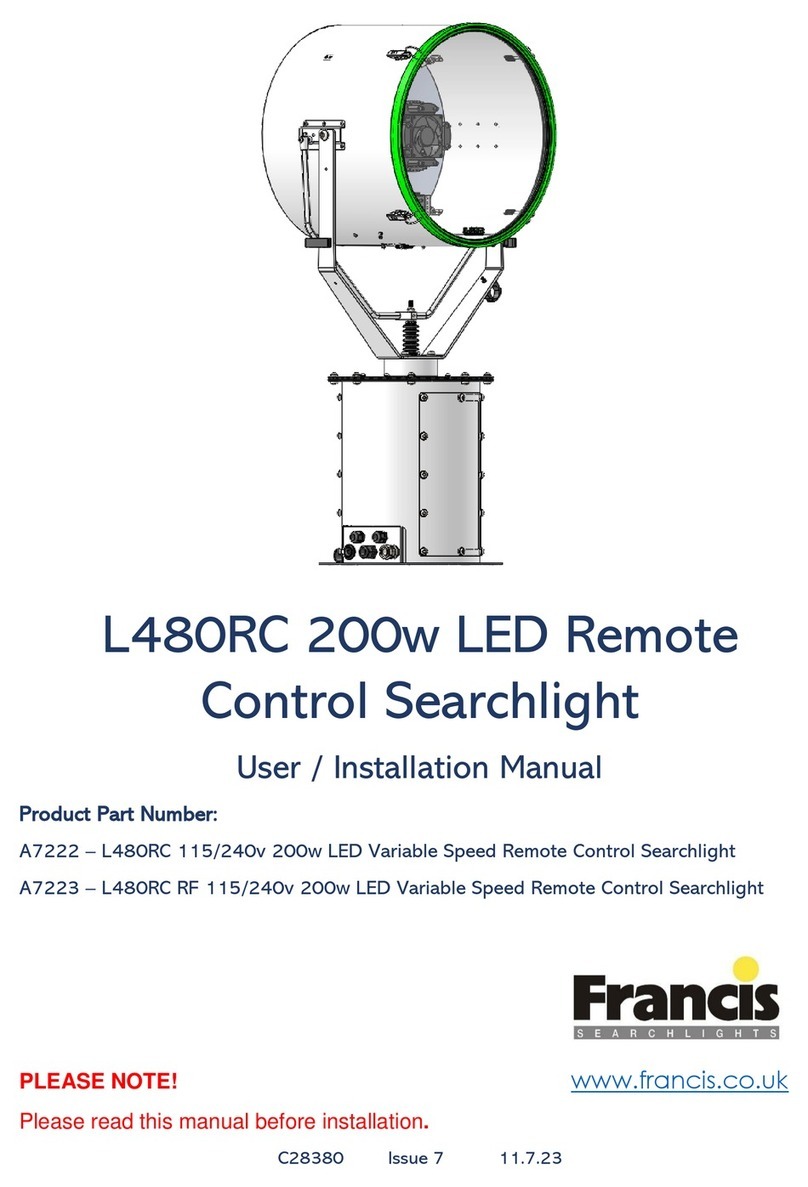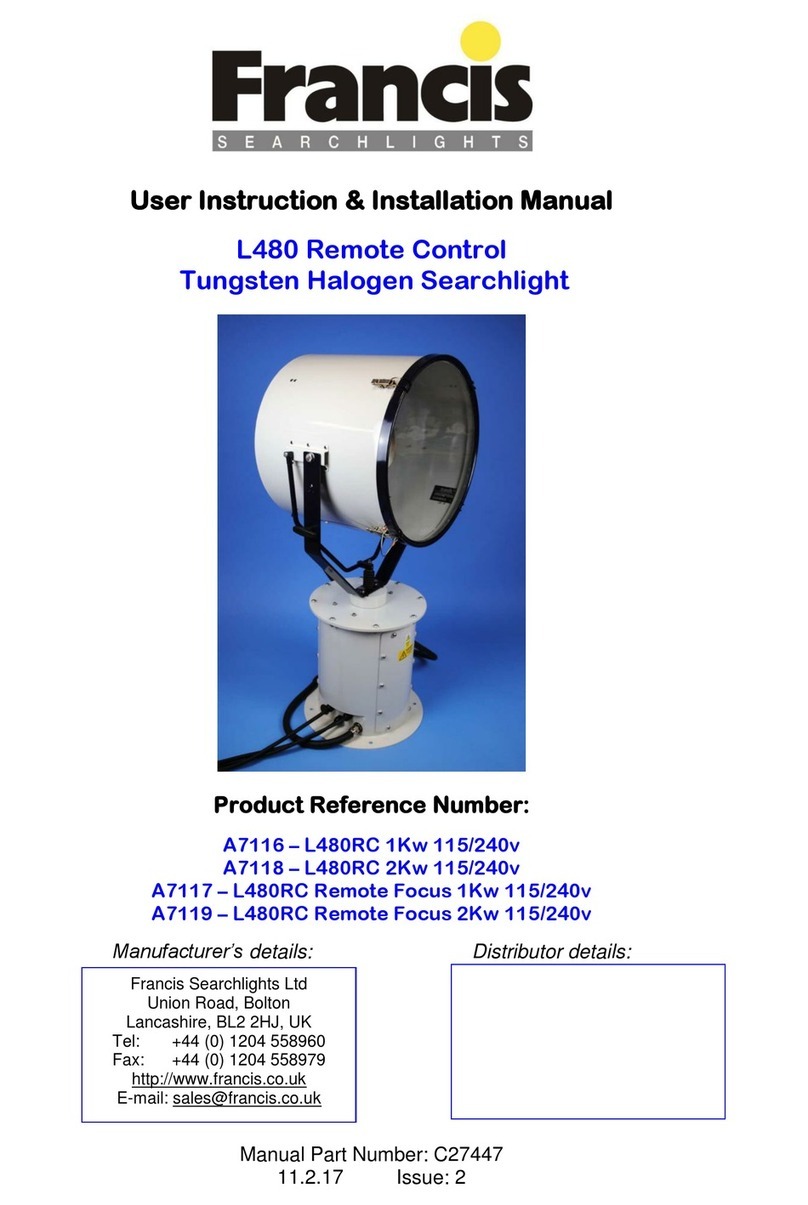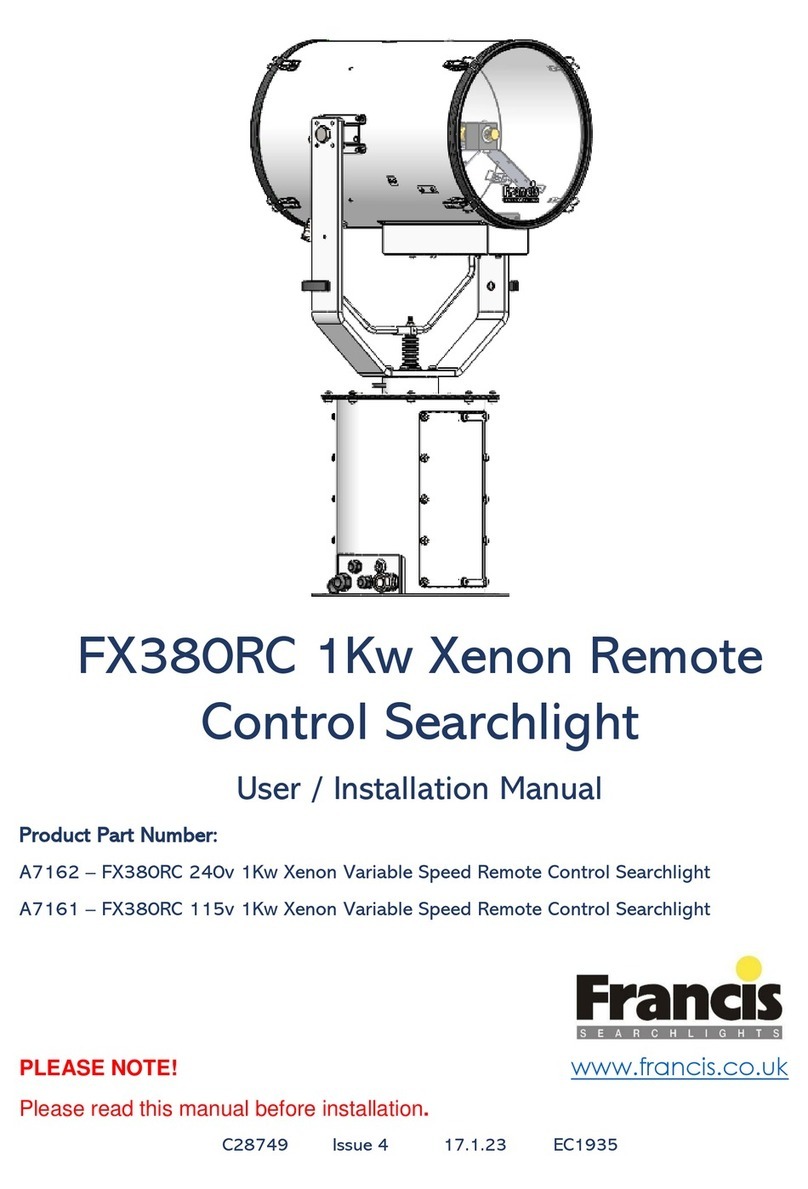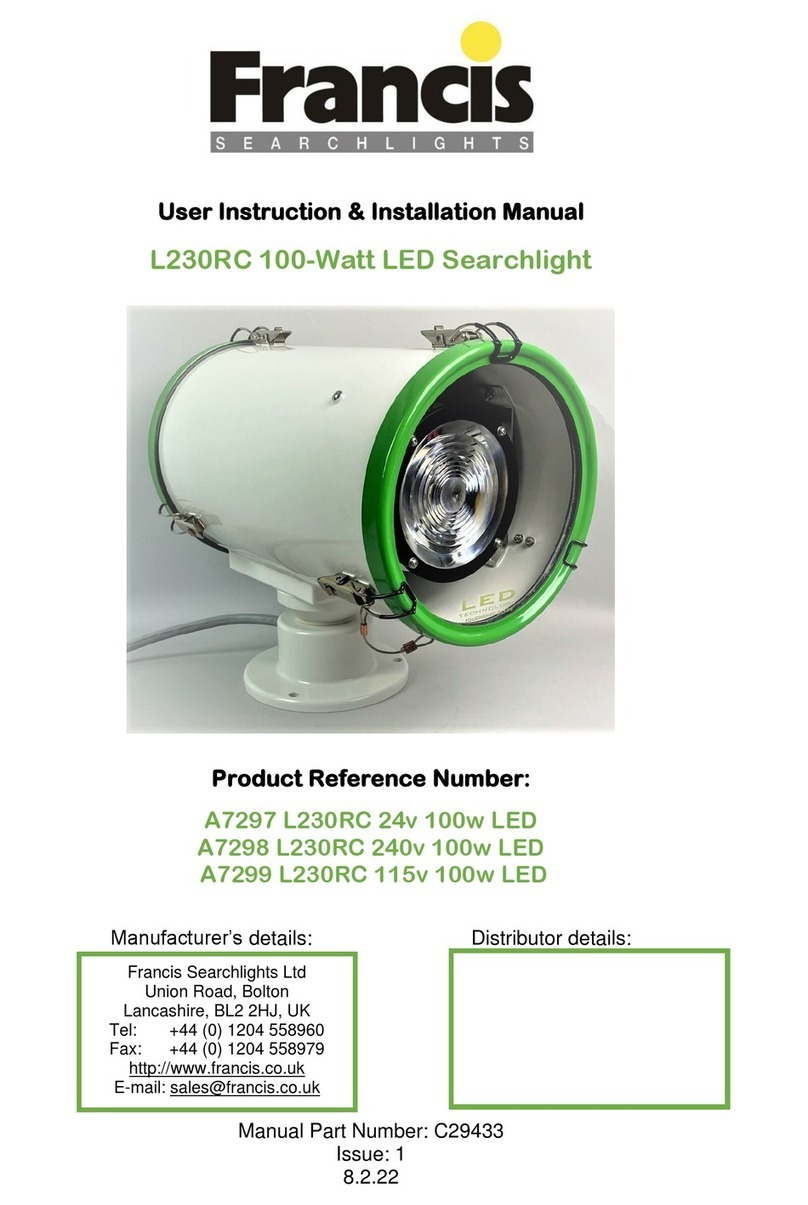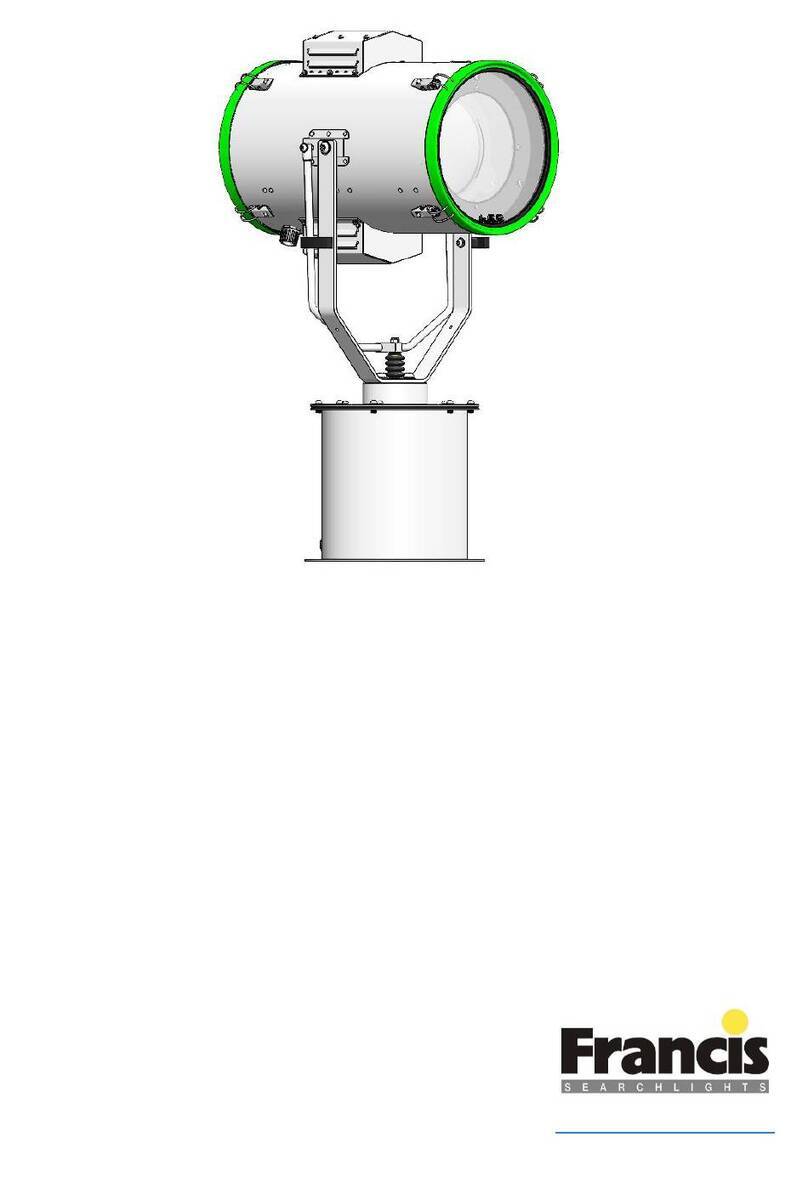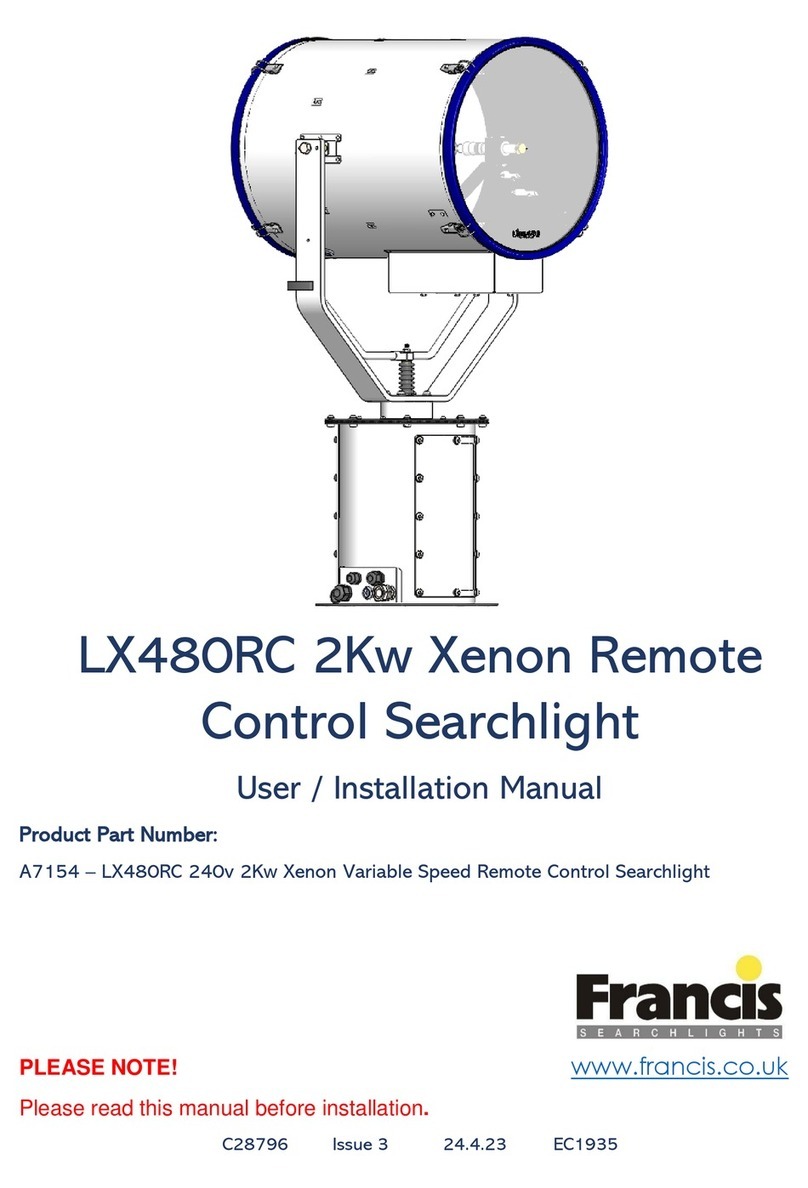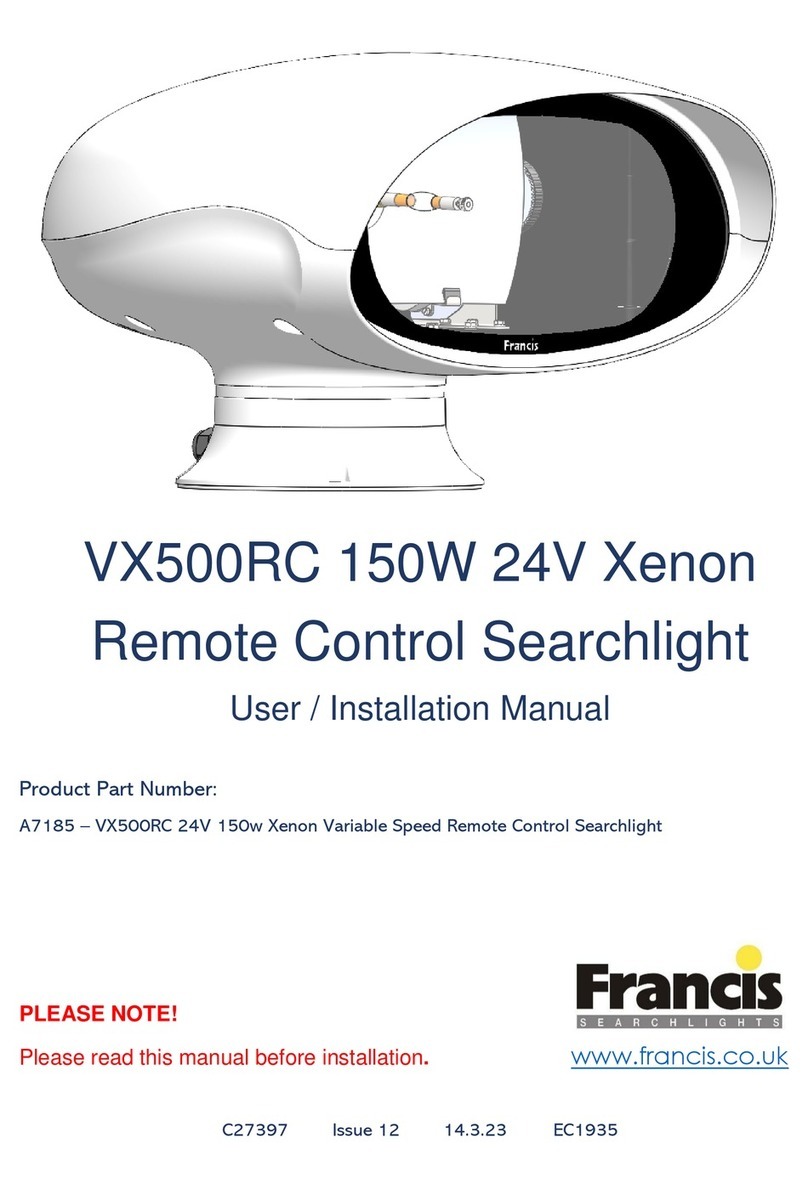2 –Safety Precautions
The following instructions must be adhered to, to ensure a safe working environment and
the safety of the user.
Note: When unpacking or manoeuvring the searchlight into its fixing position, suitable
lifting points must be used to prevent damage to the equipment or personal injury.
•Only suitably qualified personnel may install the products.
•Prevent rain, snow, condensation, and water droplets from contacting the lamp as this may
cause bulb failure and possible shattering.
•Halogen bulbs run with a high internal pressure more than atmospheric. Whilst the construction
is inherently strong, there is a slight risk of the bulb shattering.
•Never look directly into an illuminated searchlight as this may cause severe damage to
eyesight. If it is necessary to inspect a lamp whilst in operation, always wear suitable protective
goggles.
•Should it be necessary to examine the lamp with the front bezel removed, always use a
protective shield and wear goggles to ensure a safe working environment.
•Never attempt to clean a lamp whilst in use.
•Searchlights get hot. Never touch the unit when lit and always allow 15 to 20 minutes for
cooling down after turning the searchlight off.
•Never place anything on or cover the searchlight when in use.
•Ensure the lamp has cooled sufficiently before removal.
•If undue force appears necessary to remove the lamp, the equipment should be inspected by a
competent person or contact the manufacturer.
•When breaking a lamp for disposal, care must be taken to ensure the glass fragments are
safely contained. This operation must be performed out of doors in free air. In all
circumstances refer to the lamp manufacturer’s instructions packed with the lamp.
•Due to the vast range of lamps available it may appear possible that more powerful lamps can
be used in the equipment than for which it was designed. Even when the unit will physically
accept a higher wattage or voltage lamp, this substitution is not recommended and is
dangerous. This action will also void any warranties on the equipment.
Always refer to the lamp manufacturer’s technical data when dealing with lamps.
